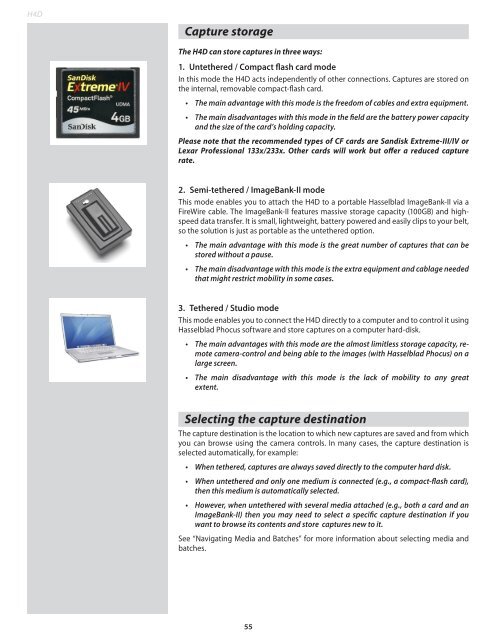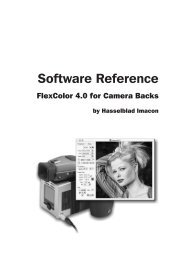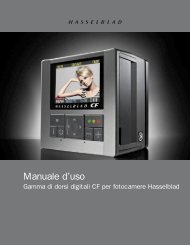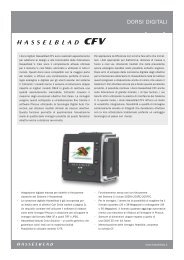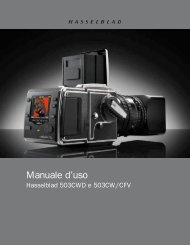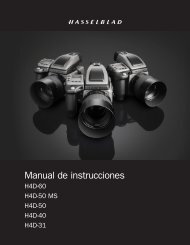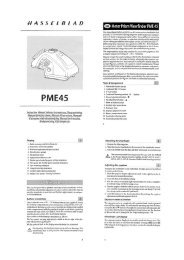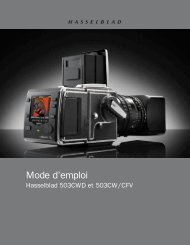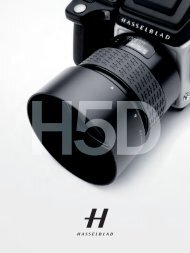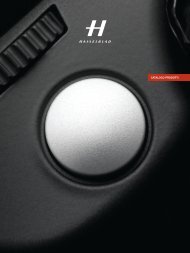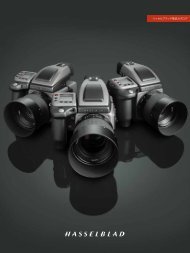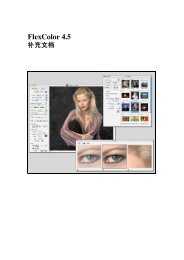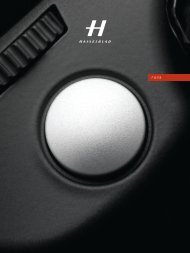User Manual - Hasselblad.jp
User Manual - Hasselblad.jp
User Manual - Hasselblad.jp
Create successful ePaper yourself
Turn your PDF publications into a flip-book with our unique Google optimized e-Paper software.
H4DCapture storageThe H4D can store captures in three ways:1. Untethered / Compact flash card modeIn this mode the H4D acts independently of other connections. Captures are stored onthe internal, removable compact-flash card.• The main advantage with this mode is the freedom of cables and extra equipment.• The main disadvantages with this mode in the field are the battery power capacityand the size of the card’s holding capacity.Please note that the recommended types of CF cards are Sandisk Extreme-III/IV orLexar Professional 133x/233x. Other cards will work but offer a reduced capturerate.2. Semi-tethered / ImageBank-II modeThis mode enables you to attach the H4D to a portable <strong>Hasselblad</strong> ImageBank-II via aFireWire cable. The ImageBank-II features massive storage capacity (100GB) and highspeeddata transfer. It is small, lightweight, battery powered and easily clips to your belt,so the solution is just as portable as the untethered option.• The main advantage with this mode is the great number of captures that can bestored without a pause.• The main disadvantage with this mode is the extra equipment and cablage neededthat might restrict mobility in some cases.3. Tethered / Studio modeThis mode enables you to connect the H4D directly to a computer and to control it using<strong>Hasselblad</strong> Phocus software and store captures on a computer hard-disk.• The main advantages with this mode are the almost limitless storage capacity, remotecamera-control and being able to the images (with <strong>Hasselblad</strong> Phocus) on alarge screen.• The main disadvantage with this mode is the lack of mobility to any greatextent.Selecting the capture destinationThe capture destination is the location to which new captures are saved and from whichyou can browse using the camera controls. In many cases, the capture destination isselected automatically, for example:• When tethered, captures are always saved directly to the computer hard disk.• When untethered and only one medium is connected (e.g., a compact-flash card),then this medium is automatically selected.• However, when untethered with several media attached (e.g., both a card and anImageBank-II) then you may need to select a specific capture destination if youwant to browse its contents and store captures new to it.See “Navigating Media and Batches” for more information about selecting media andbatches.55


